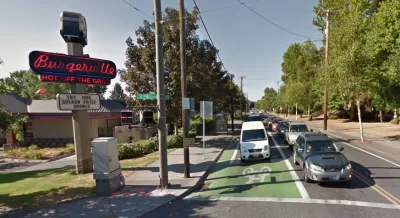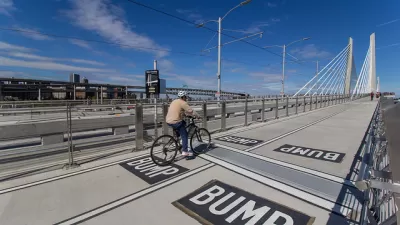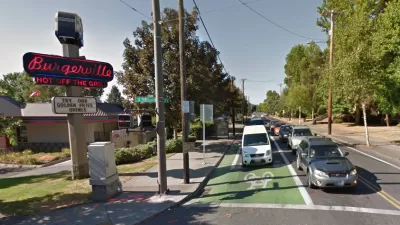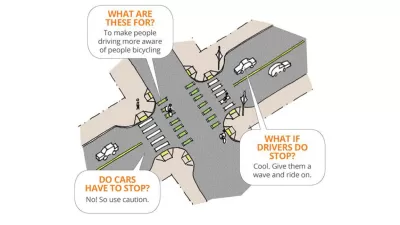A bike advocate tells the story of the how the state department of transportation convinced local officials to remove a popular bike lane in Portland.

"Two of southeast Portland’s most-ridden bike lanes are slated to be removed at the insistence of the state of Oregon," reports Michael Andersen.
According to Andersen, the "[bike lanes on each side of Southeast 26th Avenue near Powell draw something like 600 to 800 people per day (even in winter) and run in front of Cleveland High School. They will be paved over sometime in the coming months and not replaced." The decision comes from the Oregon Department of Transportation (ODOT), which announced the project last week.
The city of Portland, however, had to accept the decision of the state to remove the lane, despite disagreement over the potential safety impacts. The ODOT believes that removing the bike lane will improve safety at the intersection of SE Powell at SE 26th by reducing the number of bicycles on the street. Many bike riders, according to an ODOT spokesperson, will switch to 28th Avenue instead "when a new traffic signal and neighborhood greenway are installed there in the coming months."
Andersen clearly opposes the removals, providing several examples of evidence and policy maxims that contradict the claims made by the ODOT. By providing a lot more information on this specific example and the other projects and events that led to the decision to pave over the lanes, Andersen also provides an unfortunate case study of a city and a state failing to resolve differences in their approaches to streets.
FULL STORY: City gives in to state demand to remove bike lanes from SE 26th Avenue

Study: Maui’s Plan to Convert Vacation Rentals to Long-Term Housing Could Cause Nearly $1 Billion Economic Loss
The plan would reduce visitor accommodation by 25,% resulting in 1,900 jobs lost.

North Texas Transit Leaders Tout Benefits of TOD for Growing Region
At a summit focused on transit-oriented development, policymakers discussed how North Texas’ expanded light rail system can serve as a tool for economic growth.

Why Should We Subsidize Public Transportation?
Many public transit agencies face financial stress due to rising costs, declining fare revenue, and declining subsidies. Transit advocates must provide a strong business case for increasing public transit funding.

Dear Tesla Driver: “It’s not You, It’s Him.”
Amidst a booming bumper sticker industry, one writer offers solace to those asking, “Does this car make me look fascist?”

A Visual Celebration of Manhattan’s Chinatown Elder Community, Through Food
Lanterns, cafeteria trays, and community connection take center stage in this stunning photo essay.

How to Make US Trains Faster
Changes to boarding platforms and a switch to electric trains could improve U.S. passenger rail service without the added cost of high-speed rail.
Urban Design for Planners 1: Software Tools
This six-course series explores essential urban design concepts using open source software and equips planners with the tools they need to participate fully in the urban design process.
Planning for Universal Design
Learn the tools for implementing Universal Design in planning regulations.
City of Santa Clarita
Ascent Environmental
Institute for Housing and Urban Development Studies (IHS)
City of Grandview
Harvard GSD Executive Education
Toledo-Lucas County Plan Commissions
Salt Lake City
NYU Wagner Graduate School of Public Service





























